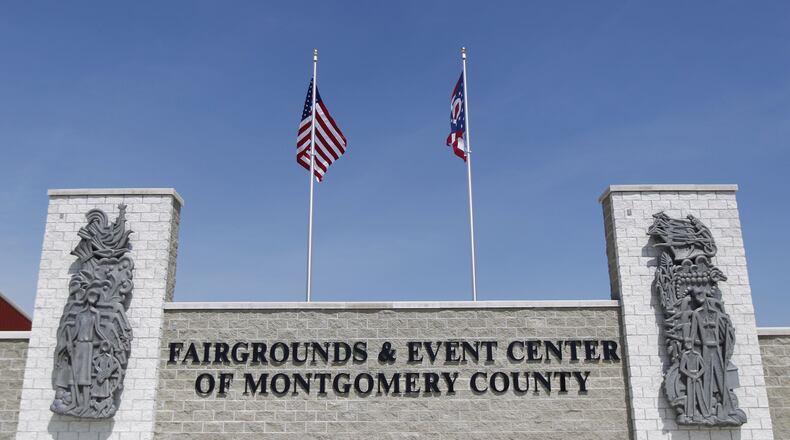Woolf said the new fairgrounds was a welcome development — bringing more people and more traffic to the township — but one that also stretches the township’s resources.
VIDEO: Tour the new Montgomery County Fairgrounds
A proposed joint economic development district, or JEDD, “provides a possibility of generating new-found revenue to help support fire, critical safety services, the sheriff’s response and to maintain roads around the area of the fairgrounds and other parts of the township,” he said.
The Ohio General Assembly approved the arrangements in 1993 to allow townships, other entities and municipalities to share income taxes within an area without requiring annexation.
Montgomery County Commissioners approved in December to pay the Montgomery County Transportation Improvement District $25,000 to establish the JEDD. Steve Stanley, executive director of the transportation district, is helping negotiate and execute the final agreement by the end of May.
“It’s really part of a long-term partnership that the Agricultural Society, Montgomery County and Jefferson Twp. want to actively pursue to have the best combination of services and facilities there,” Stanley said.
Last November, those partners owning land in the area, which also includes the Alcohol, Drug Addiction, and Mental Health Services of Montgomery County, signed a memorandum of understanding to cooperatively form the economic development district.
“This will allow the township some income to make necessary improvements, and those improvements would not only help us out but the area in general,” said Greg Wallace, the Montgomery County Agricultural Society’s executive director.
MORE: UD, Premier form corporation for redevelopment of former fairgrounds
Each JEDD also requires a municipal partner. It’s not yet known which municipality might become the fairgrounds’ JEDD partner, but Dayton has current JEDD agreements with both Butler Twp. and Miami Twp., said Bejoy John, Dayton’s deputy finance director.
A JEDD can levy income taxes only as high as the municipal partner. If partnered with Dayton, that could be as high as 2.25 percent, John said.
New Miami Twp. JEDD contracts set minimum payments to communities
It’s also too soon to know exactly where JEDD borders will be drawn or how additional revenue might be divided between the governments, Woolf said.
“It’s so early in this process,” he said. “Let’s face it, a year ago today we were still looking at the buildings being built with no idea they would have them open by the time the fair occurred, and full circle one year later, we are working on the economic development tools for the surrounding area.”
The JEDD area as proposed encompasses roughly 241 acres including and surrounding the new fairgrounds at 645 Infirmary Road. The Calumet Center, 580 Calumet Lane, is also within the boundaries as well as the Montgomery County Sheriff’s Office Jefferson Twp. Substation at 555 Infirmary Road and the Frank W. Nicholas Residential Treatment Center for Youth at 5581 Dayton-Liberty Rd. By June, the Nicholas Center is moving into larger quarters nearby at 593 Infirmary Road, still within the borders.
MORE: 5 things to know about new Dayton, Miami Twp., Miamisburg JEDD deals
Stanley said he is working on a tally of employees and the payroll data within the proposed JEDD to calculate how much revenue could be expected from the income tax.
“We don’t know how much yet because we’re not that far along,” he said.
Jefferson Twp. has about 70 employees — about 80 percent part-time firefighters — in the area, according to Woolf.
Three fairgrounds employees and another dozen at the Ohio State University Extension based in the Calumet Center would be affected, but most are already well acquainted with a municipal income tax, said Greg Wallace, executive director of the Montgomery County Agricultural Society.
“We were all paying income tax when we were downtown in Dayton. It’s not something we’re not used to,” he said. “We stopped paying income taxes because we’re in the township. So paying income taxes has been historic for the ag society and for OSU.”
MORE: ‘Like moving into a new house’: First Montgomery County Fair at new fairgrounds
Construction on the new fairgrounds began in August 2017 with the role of general contractor jointly assumed by the Montgomery County Transportation Improvement District and the Agricultural Society Board. The fair board moved out of downtown last March and began operations in the Calumet Center beginning in April at Arthur O. Fisher Park about six miles west of its home of 165 years.
The 2019 Montgomery County Fair will be held July 8-14. The first fair at the new location opened last year on the grounds and in two buildings built during the initial $15-million construction phase.
About the Author

